You are here
Malla period: The Golden Age of Sculpture and Art
Nepalese traditional arts and architectures are totally dominant in Hindu and Buddhist religious philosophies which are reflected by various kinds of painting images, statue sculptures of deities, temples, monasteries, old squares, and other monuments. While many inventions have made artmaking easier and available to all, others have conducted in radical concepts and new understandings of how we define “art.”
Especially Kathmandu valley’s squares, monasteries, surrounding areas’ various pilgrimage places, Lumbini, Janakpur and, world heritage spots are main evidence of Nepalese traditional arts and architectures. In Kathmandu valley, both neighboring ancient cities Patan and Bhaktapur are well renowned due to its wonderful tradition in subjects of Nepalese traditional arts and architecture ever outstanding.
Some artistic innovations from centuries ago are now so deeply ingrained in the modern consciousness, it’s hard to imagine what art would be without them. It is undoubtful that Nepal is rich in art, culture, traditional values, warm hospitality, and very own distinct history.
During the Malla period, which spanned more than five hundred years (1200-1769), trade, agriculture, religion, and culture flourished in the Kathmandu Valley, fostering tremendous growth in the production of sacred art. Below we share the brief history of Malla art that, whether historically, practically, or conceptually, have changed artmaking for good.
1. Krishna Temple
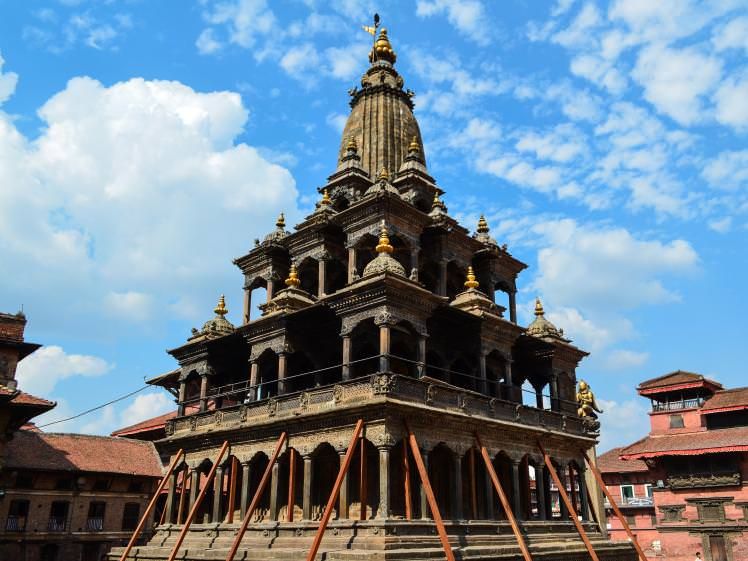
The octagonal Krishna Temple was built in 1648-49 by Pratap Malla, either as a response to rival Siddhinarshingh Malla’s Krishna Temple in Patan or as a religious consolation for his earlier failure to conquer that city, or in memory of his two wives, or a combination of all three. The three-tiered traditional Newari building is supported by stone columns around the circumference of the base. The image of Krishna inside the temple is accompanied by his two wives, Satyabhama and Rukmani, all of which, according to a Sanskrit inscription, bears a deliberate resemblance to Pratap Malla and his own two queens. Inside are the images of Krishna and two goddesses, which, according to a Sanskrit inscription, are modeled on the king and his two wives.
2. Stone inscription
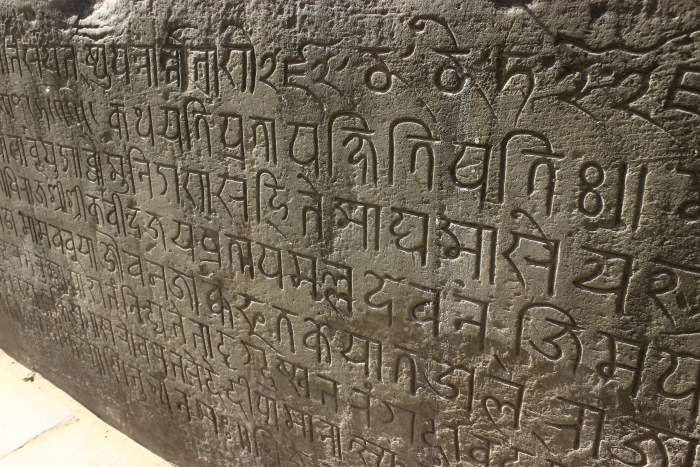
Pratap Malla’s stone inscription in Kathmandu Durbar Square which he set up on 14 January 1664. We can clearly discern the English word in WINTER.
On the outside of the white wall of Kathmandu Durbar, opposite the Vishnu Temple, is a long low stone inscription to the goddess Kalika written in fifteen different languages, including European languages. Pratap Malla, renowned for his linguistic abilities, set up this inscription on 14 January 1664. A legend tells that milk will flow from the spout in the middle if somebody is able to decipher all fifteen languages.
3. Kal Bhairav Statue
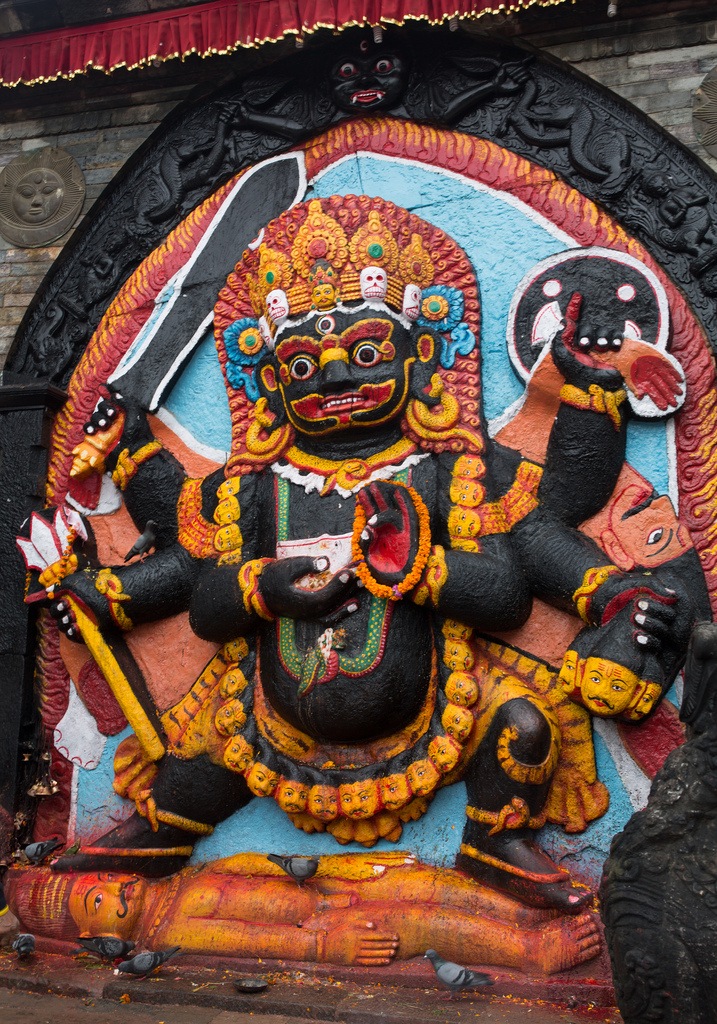
Kalbhairav Statue, Shiva in his destructive manifestation, at Hanuman Dhoka Dharwar Square North of the Jagannath Temple is the figure of Kala Bhairab. Bhairab is Shiva in his most fearsome aspect, and this huge stone image of the terrifying Kala Bhairab has six arms, wears a garland of skulls, and tramples on a corpse, which is symbolic of human ignorance. The figure is said to have been brought to its present location by Pratap Malla, having been found in a field to the north of the city. The image was originally cut from a single stone but the upper left-hand corner has since been repaired. It is said that telling a lie while standing before Kala Bhairab will bring instant death and it was once used as a form of trial by ordeal.
4. Pratap Malla’s Column
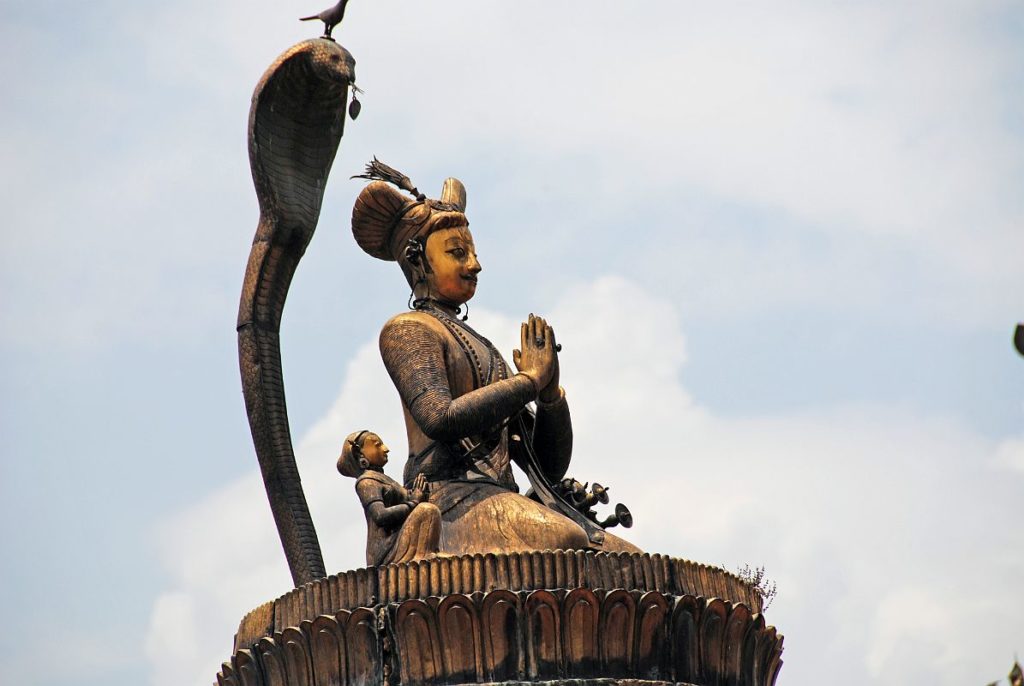
Statue of Pratap Malla with his wives and sons at Hanuman Dhoka Palace.
Across from the Krishna Temple, standing on a slightly raised platform in front of the Hanuman Dhoka is the square stone pillar, known as the Pratap Dhvaja. It is topped by a statue of King Pratap Malla, seated with folded hands and surrounded by his two wives and his five (including an infant) sons. He looks towards his private prayer room on the third floor of the Degutaleju Temple. The column was erected in 1670 by Pratap Malla and preceded the similar columns in Patan and Bhaktapur.
5. Taleju Bhawani

Taleju became the guardian deity of the Malla kings and Taleju temples were built in her honor in all three cities. The temple is one-storeyed. The artworks found in the temple are regarded among best in Nepal. The temple square consists of two shrines for two female deities, Taleju Bhawani and Kumari. The temple of Taleju has always been one of Bhaktapur’s most sacred spots, traditionally closed to all but the reigning kings. The Taleju temple stands in the Mulchok Court. At present, only Hindus are allowed to go inside the temple and the goddess cannot be photographed.
6. Kumari Ghar
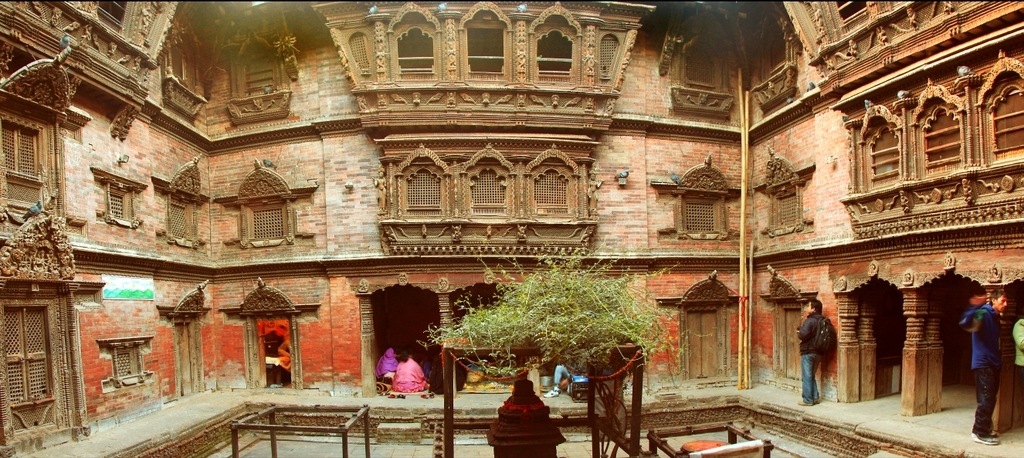
Just beside the Kathmandu Durbar Square, there stands big 3 storied Kumari Ghar which is home for the kumaris “The Living Goddess of Nepal”. It is, therefore, the holy monument for all the Nepalese that exemplify ornate craftsmanship. Typically, it is popular for extra-ordinary carved wooden balconies and windows comprising a gold crafted window as well which was built by King Jaya Prakash Malla in 1727 A.D.
Tourist may enter through the courtyard and are allowed to take pictures where they will find the immense masterful traditional carving of gods and the symbols over doors, pillars, and windows but they are strictly prohibited to take pictures of kumari who sometimes appear at any of the windows of the first floor.
You may be interested in:
7. Rani Pokhari
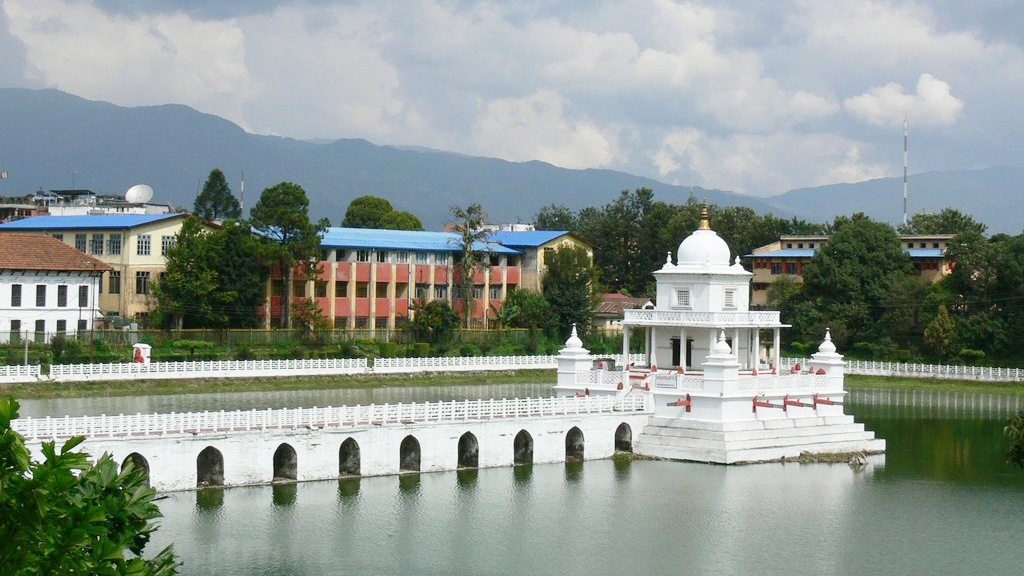
Ranipokhari lies in the heart of Kathmandu, with about fifteen minutes’ walk from Kathmandu Durbar Square. Rani Pokhari, meaning Queen’s pond, is the artificial square-shaped pond with the temple of Shiva in the middle. The Rani in question was Pratap Malla’s queen who in 1667 commissioned its construction in memory of their son, Chakravatendra Malla, who, following his father’s abdication in favor of his four sons each of whom would rule for one year, died on the second day of his reign, apparently having been trampled by an elephant.
The water with which the pond was originally filled was taken from fifty-one sacred rivers throughout Nepal and India, thus ensuring its sanctity. The temple in the middle of the pond has a domed roof reminiscent of classical Indian Mughal architecture and is surmounted by a copper spire. The main image is of the Shiva lingam, but other deities also feature. Four small shrines at each corner contain images of Bhirab, Harishankar, Shakti, and Tarkeshwari. On the southern embankment is a statue of an elephant carrying three passengers on its back, thought to be three of the male members of the Pratap Malla’s family, while a fourth person is held in its trunk.
Various myths and legends have come to be associated with Rani Pokhari over the years. It is said to be haunted by ghosts, including one especially seductive female specter who managed to unnerve even the great Pratap Malla. The pond is fenced with iron bars, apparently to prevent suicide by drowning, and opened once a year during Bhaitika, the fifth and final day of Tihar.
It has been over two years since President Bidya Devi Bhandari laid the foundation stone to mark the beginning of the Rani Pokhari’s reconstruction, on January 16, 2016, following the 2015 earthquake that had badly damaged the structure.
8. Gai Jatra
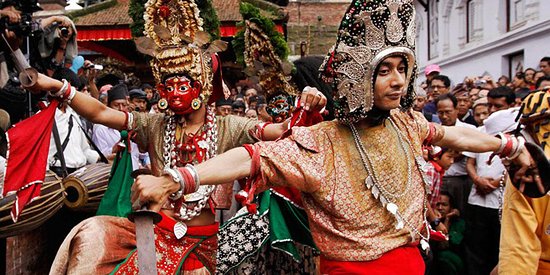
When King Pratap Malla lost his son, his wife, the queen, remained grief-stricken. The king was very sad to see the condition of his beloved queen. The king, in spite of several efforts, could not lessen the grief of his wife. He desperately wanted to see a little smile on her lips; so he announced that anyone who made the queen laugh would be rewarded adequately. During the festival of Gai Jatra, the cow procession was brought before the grief-stricken queen. Then the participants began ridiculing and mocking the important people of the society.
Finally, when the social injustices and other evils were highlighted and attacked mercilessly, the queen could not help but smile. The queen laughed and the king instituted a tradition of including jokes, satire, mockery and lampoon into the Gaijatra celebration. As per the traditions, every family who has lost a relative during that past year participates in a procession through the streets leading a cow. If a cow is unavailable, a young boy dressed as a cow is substituted.
9. Swayambhunath
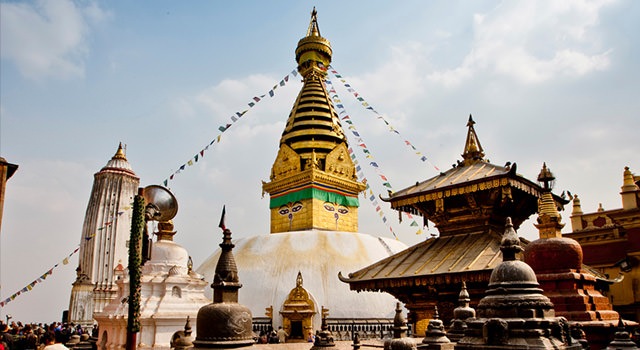
In 1614 additions and renovations of Swayambhunath complex were made by Zhamarpa VI during the reign of Pratap Malla. Access from Kathmandu was improved with the construction of a long stairway and a bridge across the Vishnumati. At the bottom of the 400 stone steps are three painted images symbolizing the Three Precious Jewels of Buddhism, which were erected in 1637 by Pratap Malla and his son, Lakshmana Singh Malla.
10. Shikara-style Shiva temple in Bhaktapur
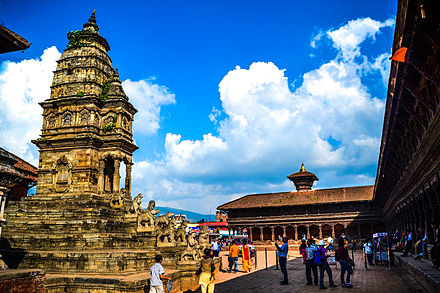
In 1674 Jitamitra Malla built a Shikara-style Shiva temple with a gilded repousse mask of the God on each side in Bhaktapur. In 1682 he built near the Durbar the two-storied Dharmasala Palace in which there is a golden Mahadeva. The palace was used by royalty until 1769 and today is a museum and part of the World Heritage Site on Durbar Square. To the east of this, he erected the temple and statue of Narayana, along with the temples of Dattatrikasa and Pashupati.
An inscription in 1678 states that he built the royal palace Thanathu Dubar and its gardens and courtyard. Jitamitra was also credited with restoring Kumari Chowk, the images of Astamatrikas and in 1690, donated two large cooper kettledrums (nagara) or bells to his favorite deity, the goddess Taleju for the gilded roof of Taleju. He also contributed a finely carved wooden tympanum above the main entrance to the Mul Chowk and also erected many memorials in Bhaktapur.
You May Also Like To Read Arts And Crafts Of Nepal









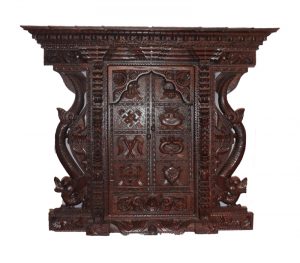

Leave a Reply